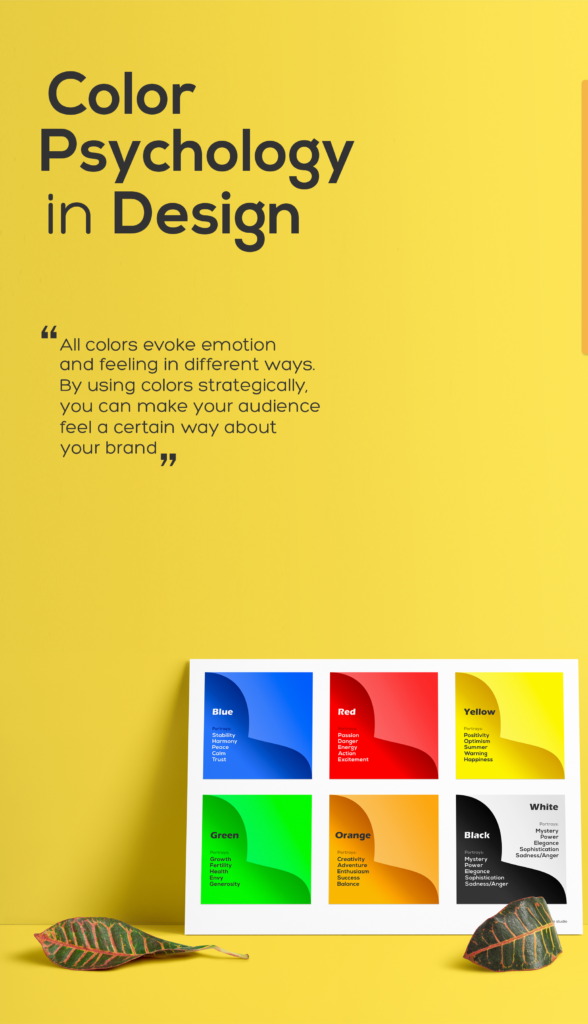- Understand the Essence of Storytelling:
Storytelling is an age-old tradition that captivates audiences by presenting information in a compelling and relatable manner. Embrace storytelling techniques to create a narrative thread that connects with your audience on an emotional level. Consider elements such as characters, plot, conflict, and resolution to infuse storytelling into your designs.
- Define Your Storytelling Goals:
Before embarking on a design project, establish your storytelling goals. What message do you want to convey? What emotions do you want to evoke? Define the key aspects of your narrative and align them with the overall purpose and objectives of your design project.
- Use Imagery to Evoke Emotions:
Visual elements, such as images and illustrations, have the power to evoke emotions and convey messages without relying solely on text. Select visuals that align with your storytelling goals and resonate with your audience. Consider composition, color, lighting, and subject matter to create a visual narrative that elicits the desired emotional response.
- Create a Visual Hierarchy:
Just like in traditional storytelling, a visual hierarchy guides the viewer’s attention through your design. Utilize size, contrast, positioning, and typography to establish a clear hierarchy and lead the viewer’s eye along the narrative path. This ensures that your key messages and story elements are communicated effectively.
- Incorporate Iconography and Symbols:
Symbols and icons can serve as powerful storytelling tools, communicating ideas and concepts in a concise and universally understood manner. Integrate relevant symbols and icons into your designs to enhance the narrative and provide visual cues that enrich the audience’s understanding.
- Typography as a Storytelling Element:
Typography itself can contribute to the storytelling aspect of your design. Experiment with different font styles, weights, and treatments to reflect the tone and mood of your narrative. Hand-lettering or custom typography can add a unique touch that amplifies the storytelling experience.
- Sequencing and Flow:
Consider the flow and sequencing of your design elements to create a coherent and engaging narrative. Arrange images, text, and other visual elements in a way that guides the viewer through the story smoothly. Pay attention to transitions and pacing to maintain a captivating and cohesive narrative flow.
- Incorporate Interactive Elements:
In the digital realm, interactive elements can enhance the storytelling experience. Explore interactive design techniques such as animations, micro-interactions, and user-controlled elements. These interactive features can create a more immersive and engaging narrative, allowing the audience to participate and explore the story at their own pace.
- Engage the Senses:
Storytelling goes beyond visual elements. Engage other senses, such as sound and motion, to create a multi-sensory experience. Consider incorporating audio elements, video clips, or subtle animations that enhance the storytelling and immerse the audience in the narrative.
- Iterate and Refine:
Like any creative process, visual storytelling requires iteration and refinement. Seek feedback from colleagues, clients, or target audience members to gain insights and improve your storytelling techniques. Embrace experimentation, learn from each project, and continually refine your storytelling skills.
Visual storytelling is a powerful tool in graphic design, enabling you to connect with your audience on a deeper level. By understanding the essence of storytelling, defining your goals, evoking emotions through imagery, creating a visual hierarchy, incorporating icons and symbols, utilizing typography, considering sequencing and flow, adding interactive elements, engaging the senses, and embracing iteration, you can infuse narratives into your designs that leave a lasting impact on your viewers.
Remember, the art of visual storytelling is a journey of creativity and innovation. Embrace its power and let your designs weave compelling narratives that inspire, engage, and leave a lasting impression.


